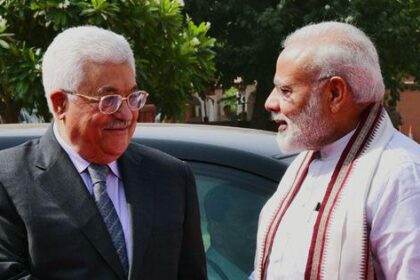IAF Chief dismisses Pakistan’s assertions, highlighting India’s evidence of damage during the recent conflict.
Air Chief Marshal AP Singh addressed the claims made by Pakistan regarding the downing of Indian aircraft during a recent four-day conflict, asserting that these assertions were primarily aimed at preserving Pakistan’s domestic reputation. He described Pakistan’s narrative as “manohar kahaniyan,” which translates to tall tales, and stated that such claims do not hold significance for him.
Singh pointed out that while India had presented substantial visual evidence showcasing damage within Pakistan, the neighboring country had failed to provide any corroborating images. He challenged the validity of Pakistan’s claims by asking, “Have you seen a single picture where something fell on any of our airbases, something hit us, a hangar was destroyed, or anything like that?” According to him, India has produced numerous photographs documenting the situation on the ground in Pakistan, yet Pakistan has not been able to produce a single image to support its claims.
In a somewhat dismissive tone, Singh remarked, “If they [Pakistan] think they shot down 15 of my jets, let them think about it.” He expressed hope that Pakistan’s belief would lead them to adjust their military planning accordingly, suggesting that they should account for 15 fewer aircraft in their inventory in any future conflict. This statement underscored his indifference to Pakistan’s assertions.
Furthermore, the IAF chief claimed that during the four-day conflict, India successfully shot down five Pakistani aircraft, specifically identifying them as belonging to the F-16 and JF-17 classes. He noted that while F-16 jets are produced in the United States, JF-17 aircraft are manufactured in China. Singh elaborated on India’s offensive actions, stating that the Indian Air Force targeted numerous Pakistani airfields and installations, inflicting significant damage on radars, command and control centers, and runways.
Previously, on August 9, Singh had indicated that Indian air defense systems were responsible for downing five Pakistani jets during Operation Sindoor. On this occasion, he also referenced an unspecified “large aircraft” that was either an ELINT or AEW&C aircraft. The latter type is equipped with advanced radar technology for detecting adversary aircraft and missiles, functioning as an aerial command and control center, while ELINT aircraft focus on gathering electronic intelligence.
The Indian military had initially claimed on May 12 that the Pakistan Air Force had lost a few aircraft, but these claims from Islamabad regarding the downing of Indian jets during air-to-air combat have not been independently verified. India has acknowledged some aircraft losses, although the exact number has not been disclosed. Notably, Indian Defence Secretary RK Singh had clarified that it was incorrect to assert that multiple Rafale jets were shot down by Pakistan, refuting the use of the plural form.
Despite not commenting on any losses, Pakistan has acknowledged that several of its airbases sustained damage during the conflict. The tensions between India and Pakistan escalated following Indian military operations, known as Operation Sindoor, which targeted alleged terrorist camps in Pakistan and Pakistan-occupied Kashmir in response to a deadly terror attack in Jammu and Kashmir.
This exchange of military actions led to retaliatory shelling by the Pakistan Army along the Line of Control, resulting in casualties among Indian civilians and defense personnel. Following the escalation of hostilities, both nations reached an understanding to halt firing on May 10, marking a temporary cessation of violence after the four-day conflict.








